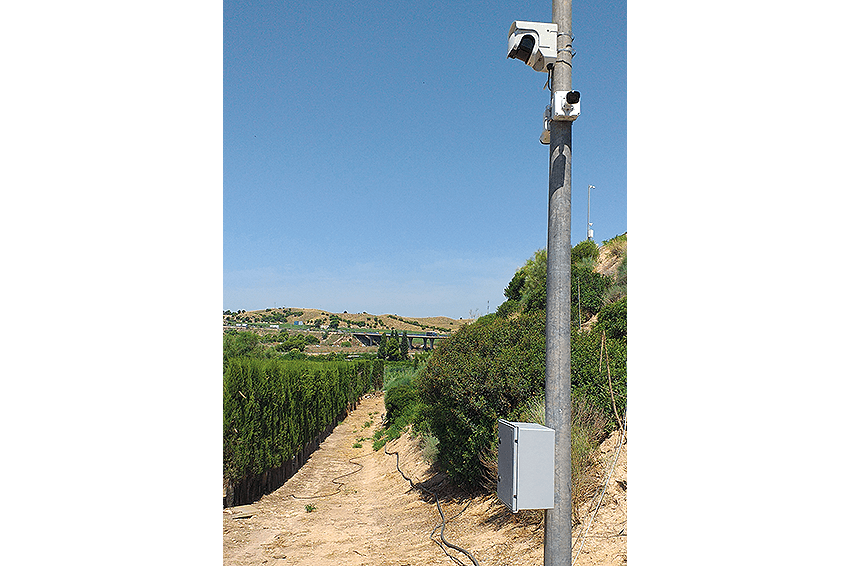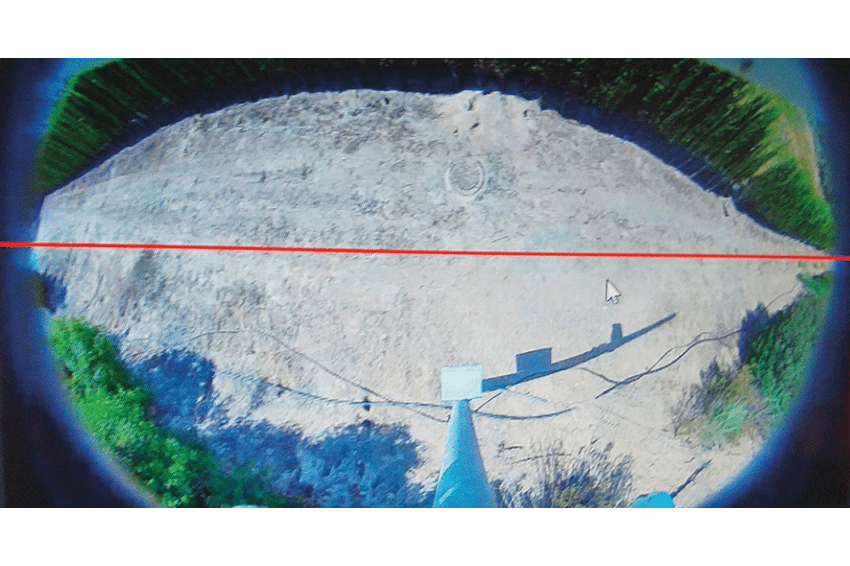How LiDAR Technology Improves Detection and Deters Intrusion
04.01.2023 - To prevent theft or damage of any kind, timing is essential: being able to quickly detect intrusion increases the chances of dealing with and deterring any potential threat or crime.
Perimeter protection plays a decisive, but often underestimated, role. However, securing perimeters effectively can be challenging, especially when considering high-security sites and critical infrastructure environments.
LiDAR-based intrusion detection is increasingly a preferred choice to enhance perimeter security due to its precise detection and proven reliability in variable lighting conditions, including complete darkness and in extreme weather conditions. In addition, the target object can be defined by size and distance of movement, and it is therefore easy to ignore most wildlife, birds, rodents and cats which could be a major cause of false alarms for other technologies.

Customisable Virtual Protection
2D LiDAR technology has the ability to be mounted vertically, horizontally and angled, protecting with an invisible laser wall or plane and can be used in a variety of perimeter protection applications providing very accurate and reliable detection. LiDARs can protect the top of a fence or wall, detecting any attempts of anyone climbing over, and can also provide an extra security layer in access points through the perimeter. Redscan Pro LiDARs from Optex provide detection coverage up to 100 m with 190° field of view with just one sensor.
Alongside protecting the perimeter against intrusion, LiDARs can work with a wider VMS, access control, and more, to provide timely alerts of anything that may signal exchange of goods/information or a possible escape attempt in law-enforcement facilities.
Point Detection
One of the most effective point location or point detection technologies available in the market is LiDAR, as it can provide the exact coordinates of where intruders are located, which is particularly important when securing large perimeters or areas where intruders are often more difficult to spot.
LiDAR stands for ‘Laser imaging, detection and ranging’ and typically works by what we call ‘time of flight’, which is when a sensor emits pulsed light waves into the surrounding environment. These pulses bounce off surrounding objects and return to the sensor. The sensor uses the time it took for each pulse to return to the sensor to calculate the distance it travelled, and with this it is able to provide the exact X,Y coordinates, enabling security staff to know, in real time, exactly where the security breach is taking place, which in turn makes the visual verification process faster as cameras can look precisely to the location where the intruder is, and then track them throughout the protected area.
Securing Entry Points
Within a perimeter, there are some critical areas where the risk of a breach is significantly higher. These are usually access gates or turnstiles, where an intrusion is more likely to be attempted. LiDARs can create virtual doors to protect gated access to the perimeter, ensuring there are no vulnerable gaps or access through blind spots while vehicles travel in and out. The system can be easily configured, so when a person is coming through the virtual door, an alarm is triggered to the security system, however if a car is coming through no alarm is raised. The system can also integrate with a VMS and other devices such as cameras and ANPR (automatic number plate recognition) to provide operators with more context.
In remote locations, where no traffic should be expected, Redscan sensors can be installed horizontally and facing out, creating a pre-warning area to alert of anyone loitering or approaching the gate.
Narrow Corridors
It is common to find narrow corridors by the perimeter line, whether it is a narrow space created by vegetation growing near the fence line, a building that is too close to the perimeter wall or buildings in a high-security area which are next to each other. Protecting these narrow corridors is a complicated task for many technologies, mostly because of the narrow space that needs protection, sometimes just a couple of meters, and with occlusions that could block the field of view. With a response time of 100 ms to classify a target, 2D LiDAR sensors are the optimal alternative to effectively and consistently solve this problem and ensure no real intrusions are missed.
Assisting Security Teams
With Redscan Pro LiDARs, alerts can be set up based on different rules or logic, which means the security system can be adapted to whatever an organisation needs to monitor and filter out, so security teams can focus on what matters. In a logistics centre, for example, large vehicles like lorries can be filtered out, so alarms are only triggered by detecting smaller vehicles and pedestrians approaching the restricted area.
Each detection zone can also be independently configured, so the area around a gate might have an immediate, priority alert, but the area around it may have a lower-risk area and might issue a pre-alert warning to operators. Alerts can be sent based on what else is detected in a zone. If a person enters a zone where there is a security guard, the system can be set to not issue an alert – but if the guard is absent, operators can be notified of the visitor’s presence.
LiDAR also acts as a powerful component of a wider security system, integrating with VMS, alarms, video cameras, access control, perimeter access, and more. A further advantage of Redscan LiDARs is the ultra-fast transmission of data, with object detection under 100 ms. In this way, LiDAR helps to provide a faster response to any incidents.
Conclusion
Security is an ongoing challenge and choosing the right protection for the perimeter will require an assessment of the security risks, the operational requirements of the site and the size of the perimeter. Intelligent detection with LiDARs adds precise, reliable and early detection of threats at the perimeter level, enhancing existing physical barriers and when integrated with video surveillance and a wider security system it provides tight protection of the perimeter, suitable for small to medium commercial, logistics and industrial facilities, right through to larger utilities, law-enforcement, government and military sites.
Contact
*OPTEX (Europe) Ltd. - EMEA Headquarters
Unit 13, Cordwallis Park, Clivemont Road
SL6 7BZ Maidenhead
United Kingdom
+44 1628631000
+44 1628503600











